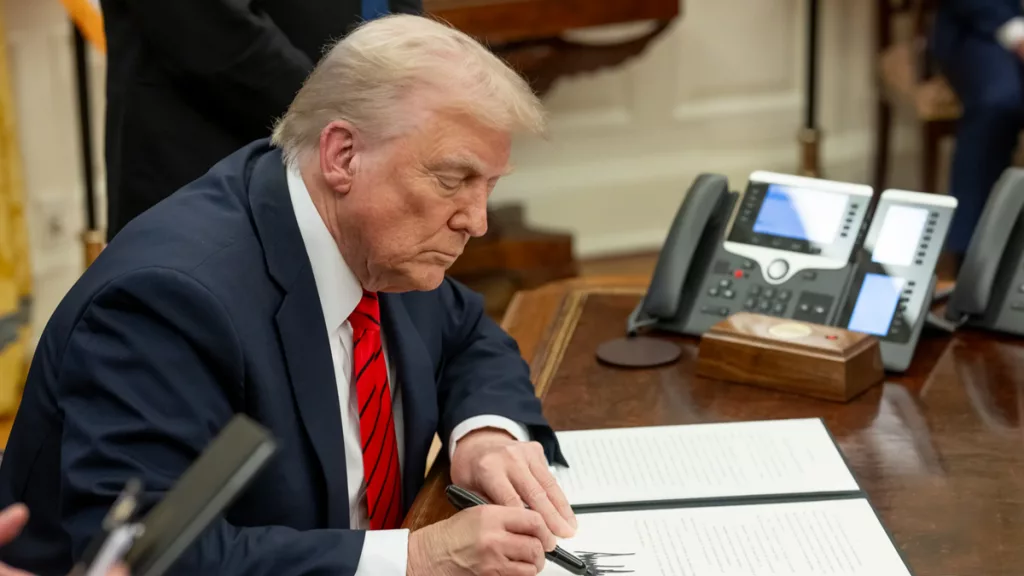WASHINGTON, D.C. – President Donald Trump released his “skinny budget” proposal for fiscal year 2026 on Friday, outlining many of his discretionary spending plans – and how he wants them funded – to Congress.
The 46-page early proposal, expected to be released fully later in May, advises cuts of $163 billion to non-defense discretionary spending, reducing it by 22% to the lowest level since 2017.
The budget largely targets spending on climate change, renewable energy, and diversity, equity, and inclusion initiatives across federal agencies to achieve the spending reductions.
It also recommends increasing the Department of Defense’s annual funding to $1.01 trillion, investing $175 billion in the Department of Homeland Security, and adding $44 billion in nondefense spending, all three achievable through the pending budget reconciliation package.
“The recommended funding levels result from a rigorous, line-by-line review of FY 2025 spending, which was found to be laden with spending contrary to the needs of ordinary working Americans and tilted toward funding niche non-governmental organizations and institutions of higher education committed to radical gender and climate ideologies antithetical to the American way of life,” Office of Management and Budget Director Russell Vought wrote.
Lawmakers are unlikely to enact Trump’s mostly symbolic recommendations, although Republican lawmakers have expressed support for general cuts to “woke” spending in order to help fund their $5.8 trillion budget resolution instructions.
The budget would cancel $15 billion in funds for renewable energy technology from the 2021 Bipartisan Infrastructure Law, instead providing a total of $500 million for Rail Safety and Infrastructure grants – a 400% increase from 2025 levels – and millions more to highway infrastructure projects.
Eliminations include “wasteful and woke” FEMA programs; U.S. investments in global climate change initiatives; and cuts all funding – totaling roughly $1 billion – to the National Institute on Minority and Health Disparities, the National Center for Complementary and Integrative Health, and the National Institute of Nursing Research, among others.
The administration also recommends closing the U.S. Institute of Peace; the Minority Business Development Agency; the immigration-focused Shelter and Services Program; and the Ending Low Income Home Energy Assistance (LIHEAP) Program, which the administration deems “unnecessary because States have policies preventing utility disconnection for low-income households.”
Among other things, the budget would increase funding for clean drinking programs by $9 million, give Food Safety Inspection Services an additional $15 million, and provide a whopping $500 million for the Make America Healthy Again initiative.
The Committee for a Responsible Federal Budget cautiously praised the plan in a statement released Friday.
“Though this is not a full budget, we are encouraged that the Administration put forward a partial plan that includes discretionary spending reductions,” CRFB President Maya MacGuineas said. “The White House should release a full budget quickly and work with Congress to fund the government by the beginning of the fiscal year – just five months away.”
“It remains to be seen what the rest of the President’s proposals will hold, and there is still the multi-trillion-dollar question of whether the reconciliation bill will blow up the debt,” she added.





